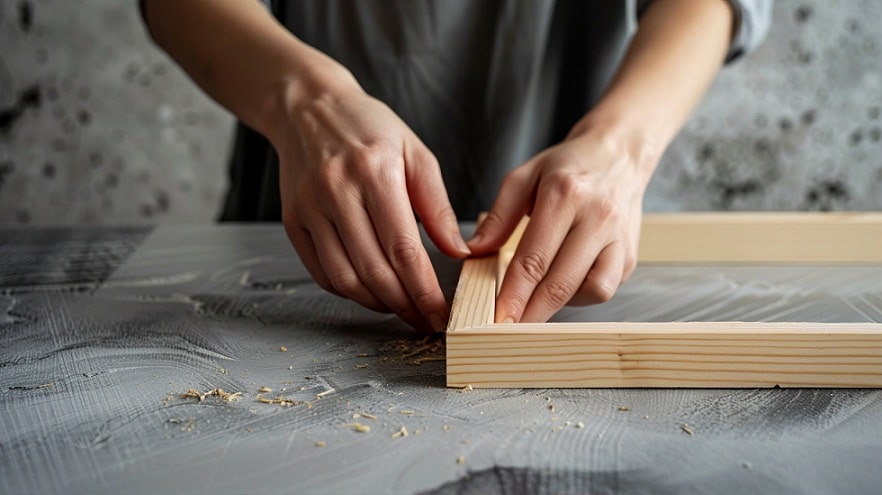
Maximizing the Benefits of Cork Flooring with Proper Underlayment Installation
Are you considering cork flooring for your home or business? If so, you’re in luck! Cork flooring offers a wide range of benefits, from its eco-friendly properties to its durability and comfort underfoot. However, to truly maximize these benefits, proper underlayment installation is key. In this blog post, “Flooring with Proper Underlayment” we’ll explore the importance of underlayment when it comes to cork flooring and how you can ensure that you get the most out of this sustainable and stylish flooring option. Let’s dive in!
Introduction to Cork Flooring and Underlayment
When it comes to flooring options, cork stands out as a sustainable and stylish choice that brings warmth and character to any space. But did you know that the key to maximizing the benefits of cork flooring lies in proper underlayment installation? Yes, it’s true! In this guide, we’ll dive into why underlayment is crucial for cork flooring, the different types available, how to install it correctly, common mistakes to avoid, and even some alternative options. So grab your tools and let’s make sure your cork floors are not just beautiful but also durable for years to come!
Importance of Proper Underlayment Installation for Cork Flooring
When it comes to cork flooring, proper underlayment installation is key to ensuring its longevity and performance. Underlayment serves as a crucial barrier between the subfloor and the cork flooring, providing cushioning, sound absorption, and moisture protection.
By installing the right underlayment, you can enhance the comfort of your cork flooring by reducing noise transmission and increasing insulation properties. This added layer also helps to prevent cracks or damage that may occur due to uneven subfloors or fluctuations in temperature.
Moreover, choosing the appropriate underlayment material is essential for maintaining the structural integrity of your cork flooring over time. Whether opting for foam underlayment for cushioning or vapor barrier underlayment for moisture protection, selecting the correct type will contribute significantly to the longevity of your flooring investment.
Overall, investing time and effort into proper underlayment installation for your cork flooring will not only improve its performance but also extend its lifespan in your home.
Types of Underlayment Materials for Cork Flooring
When it comes to choosing the right underlayment for cork flooring, there are several options available to consider. One popular choice is foam underlayment, which provides cushioning and sound absorption properties.
Another option is cork underlayment itself, which offers additional benefits such as moisture resistance and thermal insulation. This type of underlayment complements cork flooring perfectly by enhancing its natural characteristics.
For those looking for a more eco-friendly option, recycled rubber underlayment is a sustainable choice that also provides excellent noise reduction qualities. Additionally, plywood or fiberboard can be used as sturdy and reliable underlayment materials for cork flooring installations.
Each type of underlayment material has its unique features and advantages, so it’s essential to carefully evaluate your specific needs before making a decision. By selecting the right underlayment material, you can maximize the benefits of your cork flooring while ensuring long-lasting durability and comfort in your space.
Step-by-step Guide to Installing Underlayment for Cork Flooring
Are you ready to take your cork flooring to the next level with proper underlayment installation? Let’s dive into a step-by-step guide that will ensure a seamless and successful process.
First, start by preparing the subfloor – it should be clean, dry, and level. Any debris or imperfections must be addressed before laying down the underlayment.
Next, roll out the underlayment material across the floor in overlapping rows. Make sure to leave a small gap around the edges to allow for expansion.
Secure the underlayment in place using adhesive or tape as recommended by the manufacturer. This will prevent any shifting or movement once the cork flooring is installed on top.
Trim any excess underlayment along the walls and corners for a neat finish. Double-check that everything is securely in place before proceeding with installing your beautiful cork flooring.
By following these simple steps, you can maximize the benefits of your cork flooring and enjoy a durable, comfortable, and stylish surface in your home.
Common Mistakes to Avoid During Installation
When it comes to installing underlayment for cork flooring, there are some common mistakes that can easily be avoided with the right knowledge and preparation. One of the most prevalent errors is not properly preparing the subfloor before laying down the underlayment. It’s crucial to ensure that the subfloor is clean, level, and free of any debris or imperfections that could impact the installation process.
Another mistake to watch out for is using the wrong type of underlayment material for your specific cork flooring needs. Make sure to research and choose an underlayment that is compatible with cork flooring and provides adequate support and insulation.
Additionally, failing to properly overlap and secure seams in the underlayment can lead to issues down the line, such as moisture seeping through or uneven surfaces. Take care in following manufacturer guidelines for seam sealing and installation techniques.
Lastly, rushing through the installation process without proper measurements or planning can result in a sloppy finish and potential damage to both the underlayment and cork flooring. Be patient, precise, and thorough in your installation efforts to maximize longevity and benefits of your new floor.
Benefits of Using Underlayment with Cork Flooring
When it comes to cork flooring, using underlayment can significantly enhance its performance and durability. One of the main benefits of underlayment is sound reduction – it helps dampen noise from foot traffic and other sources, making your space quieter and more peaceful. Additionally, underlayment provides insulation which can help regulate the temperature in your room, keeping it cozy in winter and cool in summer.
Another advantage of using underlayment with cork flooring is moisture protection. It acts as a barrier between the subfloor and the cork planks, preventing any moisture from seeping through and causing damage. This is especially important in areas prone to humidity or spills.
Furthermore, underlayment adds an extra layer of cushioning beneath your cork flooring, providing a softer feel underfoot. This not only enhances comfort but also prolongs the lifespan of your flooring by absorbing impact and reducing wear-and-tear on the planks.
Incorporating underlayment into your cork flooring installation can bring about a host of benefits that contribute to a more comfortable, durable, and long-lasting floor for years to come.
Maintaining and Caring for Cork Flooring with Underlayment
Maintaining and caring for cork flooring with underlayment is essential to preserve its beauty and functionality over time. Regular cleaning is key to keeping your floors looking their best – sweep or vacuum frequently to remove dirt and debris that can scratch the surface.
For spills, promptly wipe them up with a damp cloth to prevent staining. Avoid using harsh chemicals or abrasive cleaners, as they can damage the cork material. Instead, opt for pH-neutral cleaning solutions specifically designed for cork floors.
Protect your cork flooring from furniture scratches by using felt pads on chair legs and table feet. Consider placing rugs in high-traffic areas to minimize wear and tear on the floor.
Periodically reseal the cork flooring to maintain its water-resistance and durability. This will help prevent moisture from seeping through the seams of the underlayment and damaging the subfloor underneath.
By following these simple maintenance tips, you can ensure that your cork flooring with underlayment stays in top condition for years to come.
Alternatives to Traditional Underlayment for Cork Flooring
When it comes to cork flooring, traditional underlayment materials like foam or rubber are commonly used for installation. However, if you’re looking for alternatives that offer unique benefits, there are a few options to consider.
One alternative is using cork underlayment itself. This adds an extra layer of cushioning and soundproofing while maintaining the natural properties of cork flooring.
Another option is using recycled rubber underlayment. Not only is this eco-friendly choice durable and moisture-resistant, but it also provides excellent insulation against cold temperatures.
For those seeking a more budget-friendly alternative, felt underlayment can be a good choice. It offers decent sound absorption and moisture protection without breaking the bank.
Each alternative has its own set of advantages and considerations to take into account when deciding which one best suits your needs for maximizing the benefits of cork flooring with proper underlayment installation.
Conclusion: Enjoying the Beauty and Benefits of Cork Flooring with Proper Underlayment Installation
By following the step-by-step guide and avoiding common mistakes during installation, you can maximize the benefits of cork flooring with a suitable underlayment. Whether you choose traditional underlayment materials or explore alternatives, ensuring a proper installation will enhance the durability, comfort, and insulation properties of your cork flooring.
With proper maintenance and care, your cork flooring will continue to provide a sustainable and stylish option for your home or business. Embrace the warmth and natural beauty of cork while enjoying its eco-friendly qualities.
Investing time in installing underlayment for your cork flooring will pay off in the long run, providing a comfortable and sustainable surface that adds value to your space. So go ahead, make the most out of your cork flooring by giving it the support it deserves through proper underlayment installation!


